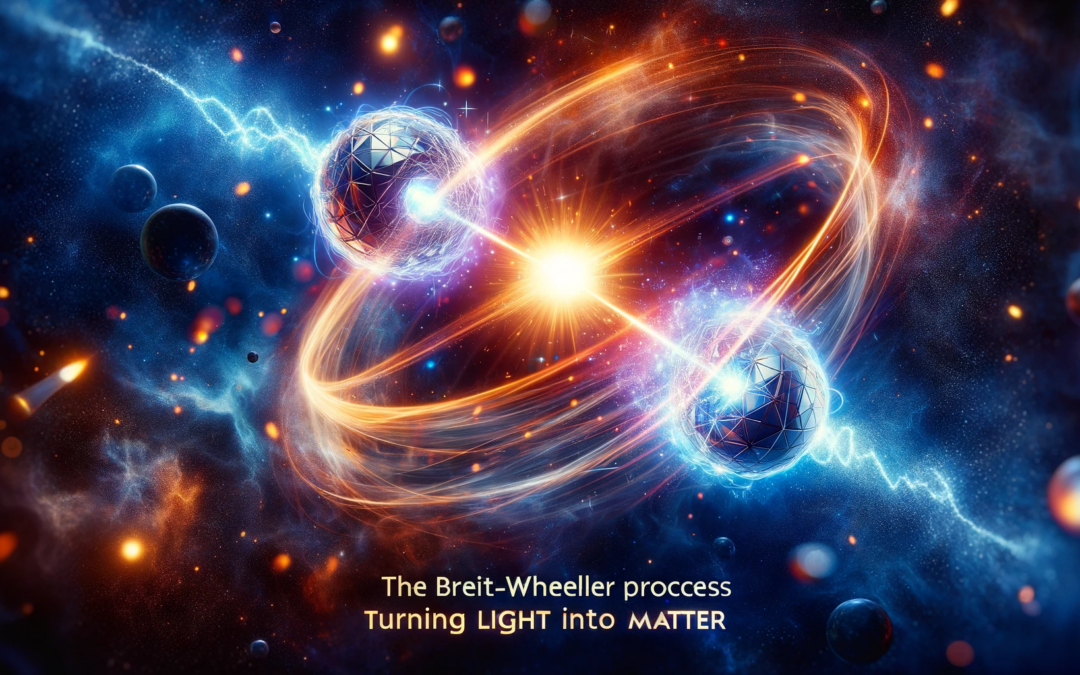The frontiers of physics have always been a realm of endless curiosity and profound discoveries. One of the most captivating areas of study in this realm is the potential for light and frequency to converge, resulting in the creation of solid matter. This concept, which marries principles from both quantum mechanics and relativity, represents a significant leap in our understanding of matter formation.
Deep Dive into Theoretical Foundations
At the core of this innovative exploration lies Albert Einstein’s groundbreaking equation E=mc², a pillar in the world of physics. This equation elucidates the deep-seated relationship between energy (E) and mass (m), primarily contextualized within nuclear reactions in traditional physics. However, it also serves as a pivotal underpinning in understanding how energy, in different forms, can be converted into matter.

Within this framework, photons, which are the quintessential particles of light, play a crucial role. These particles inherently possess energy determined by their frequency. The theory expands on this by positing that when photons are exposed to specific, controlled frequencies, they can attain energy levels high enough to facilitate a process that results in the formation of solid matter. This intriguing possibility hinges on the ability to manipulate the frequency and energy of photons in a manner that enables them to interact and converge in a way that produces particles with mass.
In essence, this approach to creating matter from light involves not just the inherent energy of photons but also the strategic manipulation of their frequency. This dual focus — on both the energy and frequency of light — opens up new theoretical avenues for transforming energy into matter, pushing the boundaries of our conventional understanding of these fundamental physical concepts.
Photon-Frequency Synergy
Photons, the basic constituents of light, inherently possess unique energy levels that are intrinsically linked to their frequency. This relationship between a photon’s energy and its frequency forms the basis for the hypothesis that through careful manipulation of these frequencies, photons can be induced to interact in novel and complex ways. This interaction, particularly under conditions of high energy and precision, theoretically has the potential to result in the creation of matter. This concept goes beyond the simple collision of photons; it encompasses a sophisticated orchestration of both light and frequency, aiming to reach a state in which energy consolidates into solid matter. This process of coalescence from energy to matter represents a profound leap in our understanding of the fundamental processes that govern the physical world.

The Breit-Wheeler Process: A Stepping Stone
The Breit-Wheeler process is pivotal to this exploration. It’s a well-established theoretical framework that posits the creation of matter, specifically electron-positron pairs, from the collision of photons. The integration of frequency manipulation into this process significantly enhances its potential and feasibility. By finely adjusting the frequency of photons, scientists can theoretically exert greater control over the energy interactions during the collision process. This controlled manipulation of photon frequencies could amplify the energy levels involved, thereby increasing the likelihood of successful matter creation. This approach adds a new dimension to the Breit-Wheeler process, expanding its scope and applicability in the field of particle physics.
Experimental Endeavors and Recent Breakthroughs
Groundbreaking experiments at institutions like Imperial College London are pushing the boundaries of these theoretical concepts into the realm of observable science. These experiments primarily focus on high-energy photon collisions, a critical aspect of testing the Breit-Wheeler process. However, the incorporation of frequency adjustments into these experiments represents an exciting and largely unexplored frontier.
Utilizing sophisticated laser technology, these experiments create conditions where photons can be manipulated and collided under highly controlled environments. This allows scientists not only to observe but also to precisely measure the processes involved in the transformation of photon energy into matter. This meticulous control and observation are vital in understanding the nuances of photon interactions, especially when frequency adjustments are introduced. Such experiments are crucial for translating the theoretical aspects of photon and frequency manipulation into tangible, observable phenomena.
Broad Implications and Future Prospects
The validation of this theory, involving the transformation of light and frequency into matter, holds the potential to revolutionize several scientific and technological fields. In astrophysics, it could shed light on the mechanisms of cosmic phenomena and offer clues about the early universe’s formation, perhaps even challenging current models of the Big Bang and stellar evolution. In the realm of material science, this theory could lead to innovative methods of synthesizing matter, potentially enabling the creation of new materials with unique properties. Furthermore, in energy production, the practical application of this theory could pave the way for new sources of clean, sustainable energy, potentially transforming how we harness and utilize energy on a global scale.
Navigating Challenges and Advancing Research
The field of transforming light and frequency into matter faces significant challenges, primarily in creating and controlling the high-energy conditions necessary for effective photon-frequency interactions. Achieving the precise energy levels required for these interactions is a complex task, demanding advancements in laser technology and photon manipulation techniques. Future research in this area will need to focus on developing more sophisticated methods for controlling both the energy and frequency of light. This includes refining laser technology to achieve higher intensities and more precise control over photon properties, as well as improving our understanding of photon dynamics at these extreme energy levels.
Conclusion
The concept of using light and frequency to create solid matter is an exhilarating advancement in the world of physics. It not only challenges our foundational understanding of energy and matter but also promises to unlock new technological possibilities and deeper insights into the fabric of the universe.

